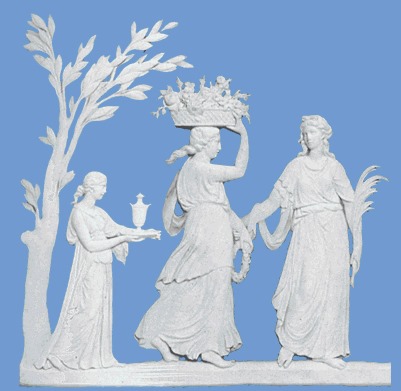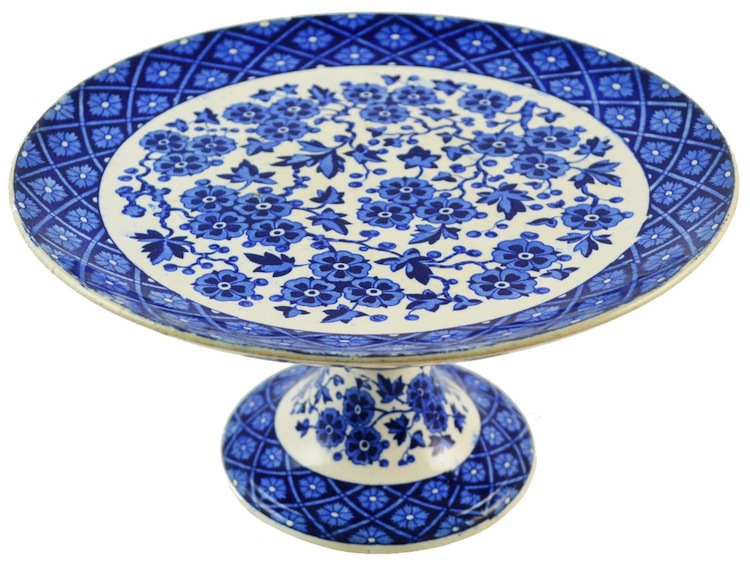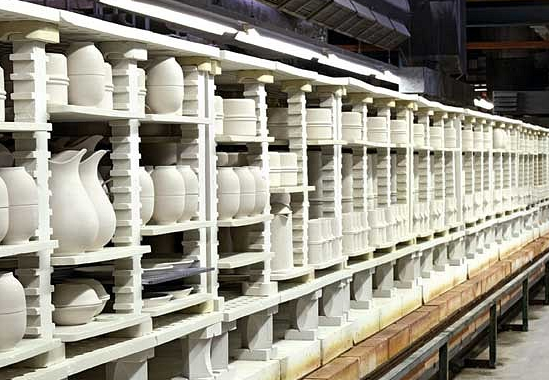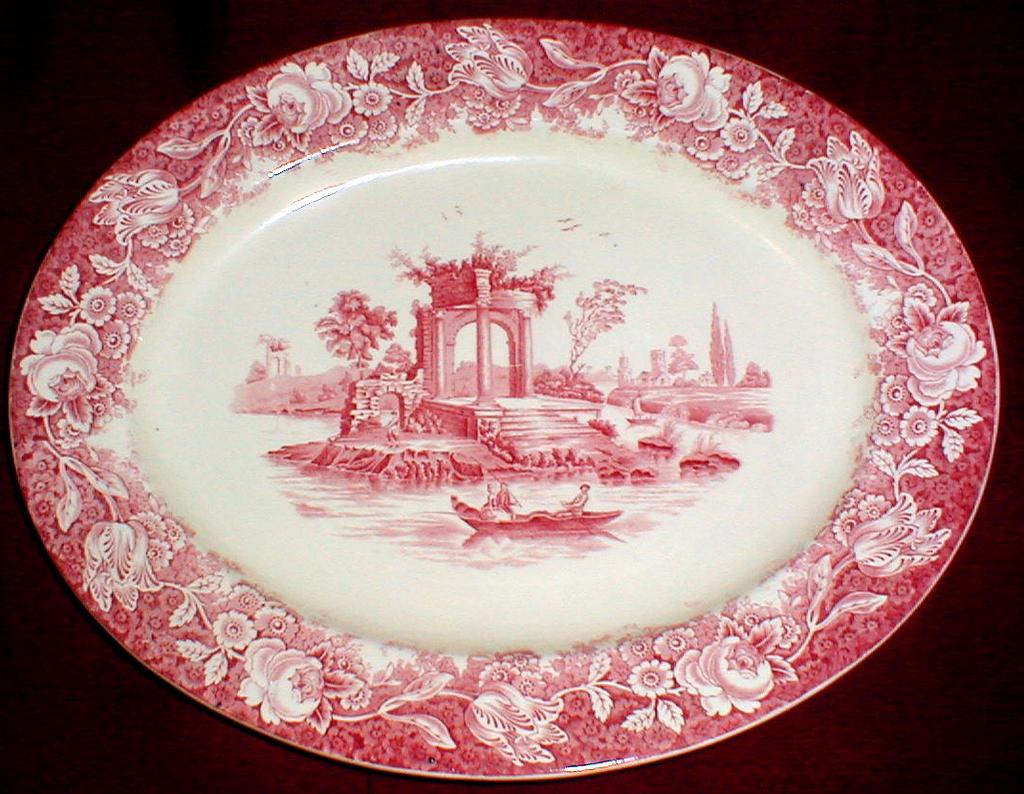Old Wedgwood
Among collectors the term Old Wedgwood is taken to refer to wares produced before Josiah’s death in 1795. Old Wedgwood is difficult to date. The first examination is of the piece itself. Old Wedgwood has a character of its own. It is finely crafted and just feels old. It is impossible to convey that quality in either words or photographs. The only way to gain an appreciation of the character of Old Wedgwood is to examine it, with the eye and with the finger tips. Take every opportunity to do so at shows and auctions.
The Potters Mark
The next recourse is to the mark. Josiah started marking his production with his name in about 1759, impressing the name into the underside of the article with printer’s movable type. The resulting mark was often uneven and sometime arced. In about 1769 he adopted the familiar mark with the name impressed from a single slug. the WEDGWOOD mark is found on useful wares between 1769 and 1781 and on all wares produced thereafter until the sans serif version of the mark was introduced in 1929.
WEDGWOOD and BENTLEY
It was in 1769 that he formed two partnerships, Wedgwood and Bentley produced decorative ware with his good friend, Thomas Bentley. Their production is marked with one or the other of the several versions of the Wedgwood and Bentley mark. Useful wares were produced with his cousin, Thomas Wedgwood and bear the WEDGWOOD mark.
THE LETTER/NUMBER CODES
In 1860 the Wedgwood factory started marking its wares with the date of manufacture impressed in each piece as part of a three letter code. The first letter of the code represents the month of manufacture, the second identified the potter who threw the shape and the last letter signifying the year the piece was made starting with 0 for 1860. The series was repeated 4 times. From 1907 on in the third series the first letter for the month is replaced by a 3 and with the fourth series commencing with A in 1924 with the figure 4. There is an area of confusion in wares in the first two series. For example TOT could mean a piece produced in either June 1865 or June of 1891. Commencing in 1929 the year mark is replaced by th last to digits of the year, 30 standing for 1930.
Some assistance in resolving the ambiguity in the two series is provided by the month letter. January, February, April, September, October, November and December are always show by their intial letter. June is always T and August is always W. In 1860-1863 March is M, May is Y and July is V. In 1864 March becomes R, May is M and July is L. In 1871 Wedgwood adopted pattern numbers with the code letter prefixes. I bought a small Queens Ware creamer at a flea market thinking from its style and shape to be quite old has the pattern number A1820 on its bottom. The impressed marks are badly filled in with the glaze and are almost obscured. The last figure in the three letter code is probably an O and the first two letters are impossible to read. Since the prefixed code was not introduced until 1871 I date the piece at 1886.
Other pointers
After 1891 the word ENGLAND is added to the WEDGWOOD mark continuing until 1908 when the words MADE IN ENGLAND replace it in all cases. MADE IN ENGLAND commenced appearing on some wares as early as 1898 but is not in general use until 1908.
Before the advent of the dating system in 1860 one must look to other clues to date pieces described as marked WEDGWOOD only. In Jasper the colour is important. Solid Black Jasper was produced between 1778 and about 1826; the white body dipped in black between 1778 and 1826 with production resumed in 1844 and continuing to the moderm era. Pale blue dates the piece between 1775 and 1826. Dark or deep blues date the piece as before 1820. In general Jasper pieces produced before 1860 were produced before 1826 except for black, blue, green and dipped pieces and solid white jasper which were resumed in 1844.
Bone china was manufactured between 1812 and 1830 then abandoned until 1878. Majolica was first produced by Wedgwood in 1860 and continued until 1940. Pattern and shape are useful more in elimination of a range of dates than in assigning one. The transfer printed Liverpool Birds pattern of our 1920’s dinner service was introduced in 1763 and has been irregularly produced ever since. The helmet shape of the cream pitcher and the parapet shape teapot have been in use for the same period. The date codes and trade marks place the service pieces of the set in the 1890s and the place settings from 1910 through 1924. The original owner obviously built her good china up over a period of years.





















